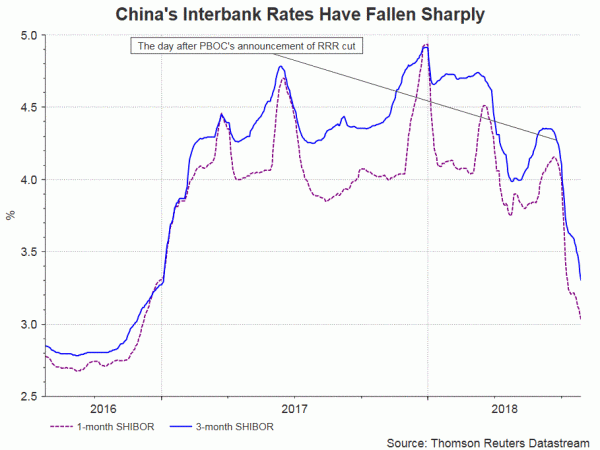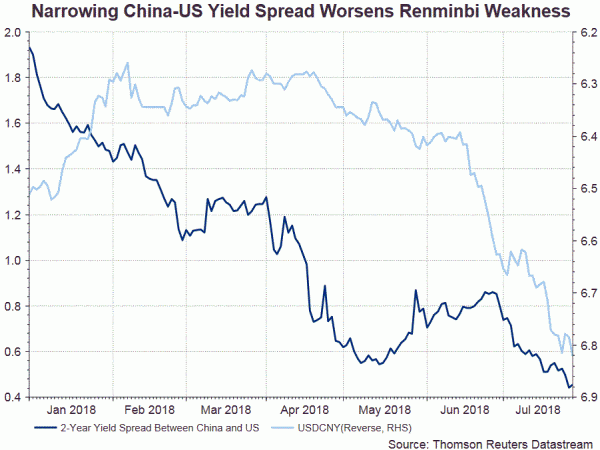Renminbi’s depreciation since April this year has accelerated over the past two months. While USDCNY has in aggregate rallied over +6% in June and July, renminbi’s weakness was less pronounced against a basket of currencies. The CEFTS index, the official reminbi index, fell -4.4% over the past two months. As US-China trade conflicts intensify, there has been much speculation that China is weakening its currency as a retaliatory measure in face of Trump’s tough tariffs. Many even cited the recent rapid selloff of renminbi as evidence. We agree that there is such a phenomenon that the Chinese government tends to allow its managed-float currency to decline more than rise. However, we believe the recent renminbi weakness is more driven by slowdown in Chinese economic growth, the shift of Chinese policy (both fiscal and monetary) to the loosening side and the consequential monetary policy divergence between the Fed and PBOC. For the months ahead, we expect risk remains skewed to the downside for renminbi. However, the Chinese government would carefully calibrate it so that the disastrous selloff back in 2H11 would not repeat.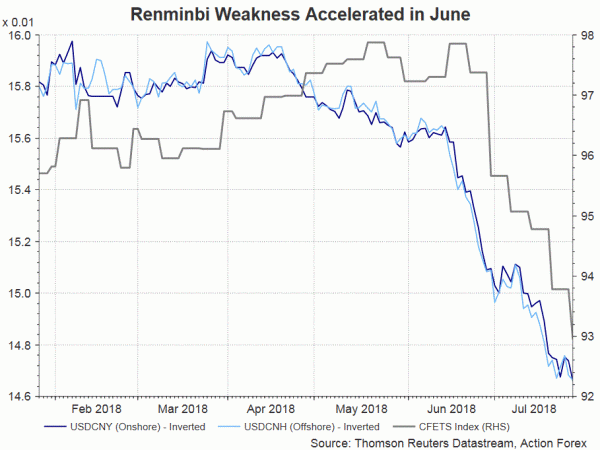
Slowdown in Chinese Economic Growth
As we have shown in previous China Watch reports, growth in China’s macroeconomic activities has been moderating and the pace of slowdown has accelerated in the second quarter. Concerning the latest data, industrial production (IP) expanded +6% y/y in June, missing consensus of +6.5% and May’s +6.8%. Retail sales grew +9% y/y, in line with expectations and improving from +8.5% recorded in May. Urban fixed asset investment grew +6% y/y, in line with expectations and continuing with the downtrend resulting from government’s deleveraging efforts. With the exception of IP growth, June’s data met expectations, compared with the downside surprises recorded in April and May. These culminated to the second quarter GDP growth of +6.7%, easing from +6.8% in the first quarter. Headline CPI edged slightly higher to +1.9% y/y in June, from +1.8% in the prior month. Inflation has stayed way below PBOC’s target of +3%. On liquidity conditions, M2 money supply surprised to the downside in June, rising only +8% whereas the market had anticipated a +8.3% growth.
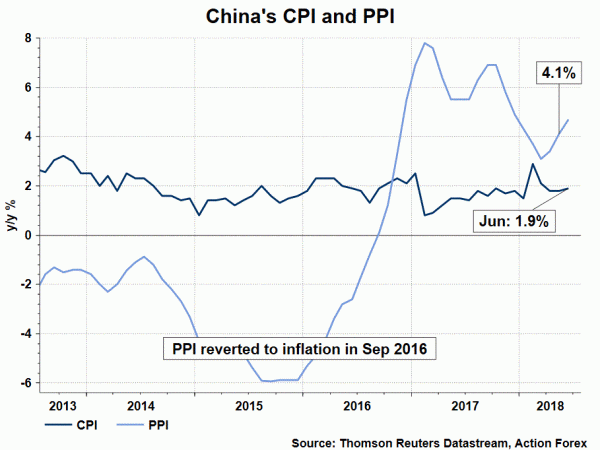
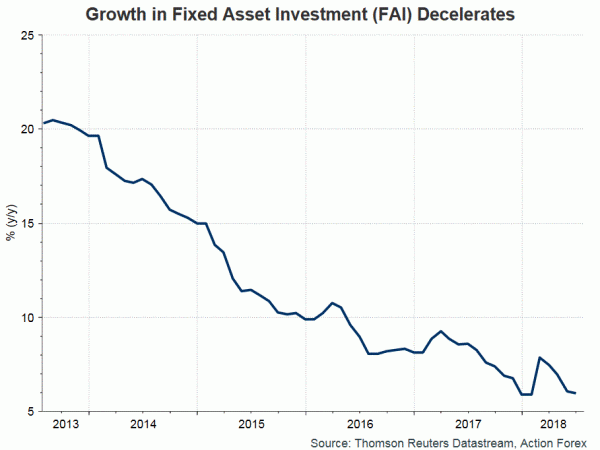
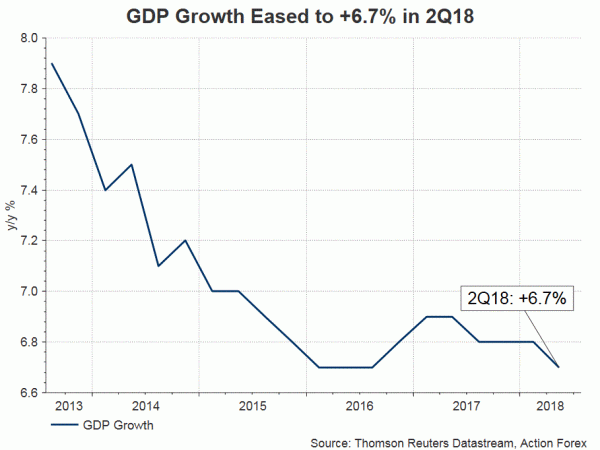
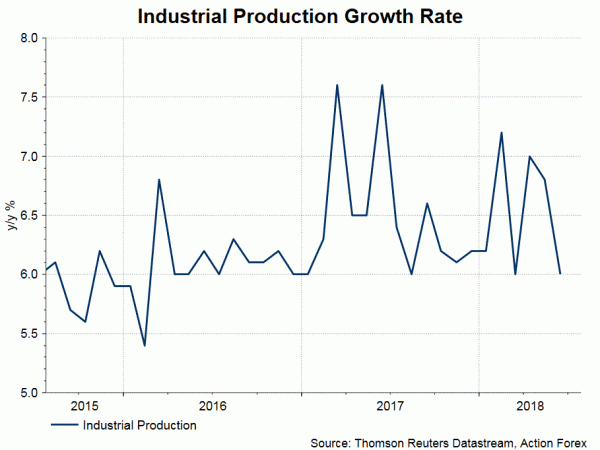
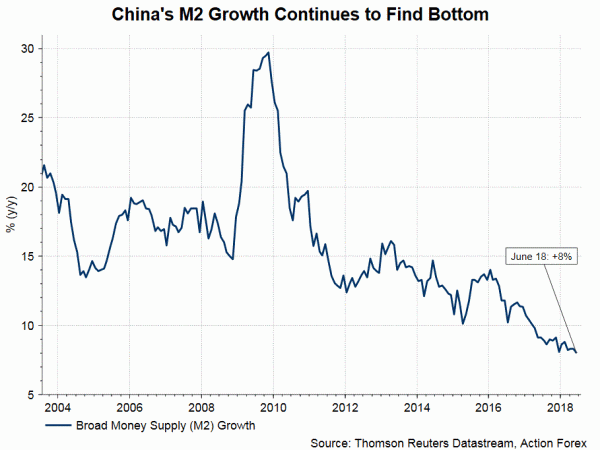
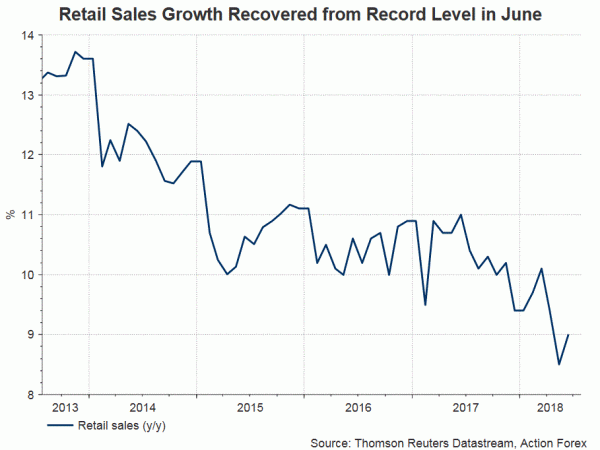
Looser, or Less Tight Policy (Both Fiscal and Monetary) Stance
PBOC has made some unexpected moves in recent months with the latest surprise coming from the injection of RMB 502B through 1-year medium-term lending facility (MLF) last week (July 23). Apart from being the biggest MLF exercise on record, the significance of the move was that this MLF is NOT refinancing maturing facilities, unlike the one implemented on July 13. This happened only a few days after PBOC announced that it would provide MLF funding for new bank purchases of corporate bonds.
Meanwhile, the State Council announced, also on July 23, that it would be “more pro-active in adopting the proactive fiscal policy” (積極財政政策要更加積極). However, it refrains from bringing a “flood of stimuli” (“大水漫灌“式強刺激)to the market. As such, we do not expect to experience the huge government spending adopted in 2011.
The State Council laid down four key areas of stimulus. First, the “proactive” fiscal policy focuses on tax cut. Second, more flexibility on easing or tightening is needed in adopting the prudent monetary policy. The aim is to encourage financial institutions to lend money, through lowering RRR, issuance of small and micro enterprise financial bonds with few or no continuous profit requirements, etc., to local governments in support of completion of infrastructural projects. Third, implementation of the National Guarantee Fund plan should speed up so as to provide RMB 140B in funding for SMEs. Fourth, zombie firms have to be eliminated. While the statement reiterated that the bottom-line remains prevention of systematic risk, it made no mention of “deleverage” anymore.
Monetary Policy Divergence between the Fed and PBOC
Apart from not raising interest rates after the Fed’s rate hike in June, PBOC cut RRR by -50 bps on July 5, injecting about RMB 700B of liquidity to the market. More RRR cut in coming months should be consistent with the Chinese government’s aim to fund local governments. Concerning the Fed, two more rate hikes remain on the pipeline. Economic developments continue to support gradual rate hikes in the coming year. The preliminary estimate of US GDP growth accelerated to an annualized +4.1% in 1Q17, marking the fastest pace since 2014. Donald Trump’s reckless complaint on Fed’s monetary policy should make no influence on the rate hike path.
Reference: http://www.gov.cn/premier/2018-07/23/content_5308588.htm




